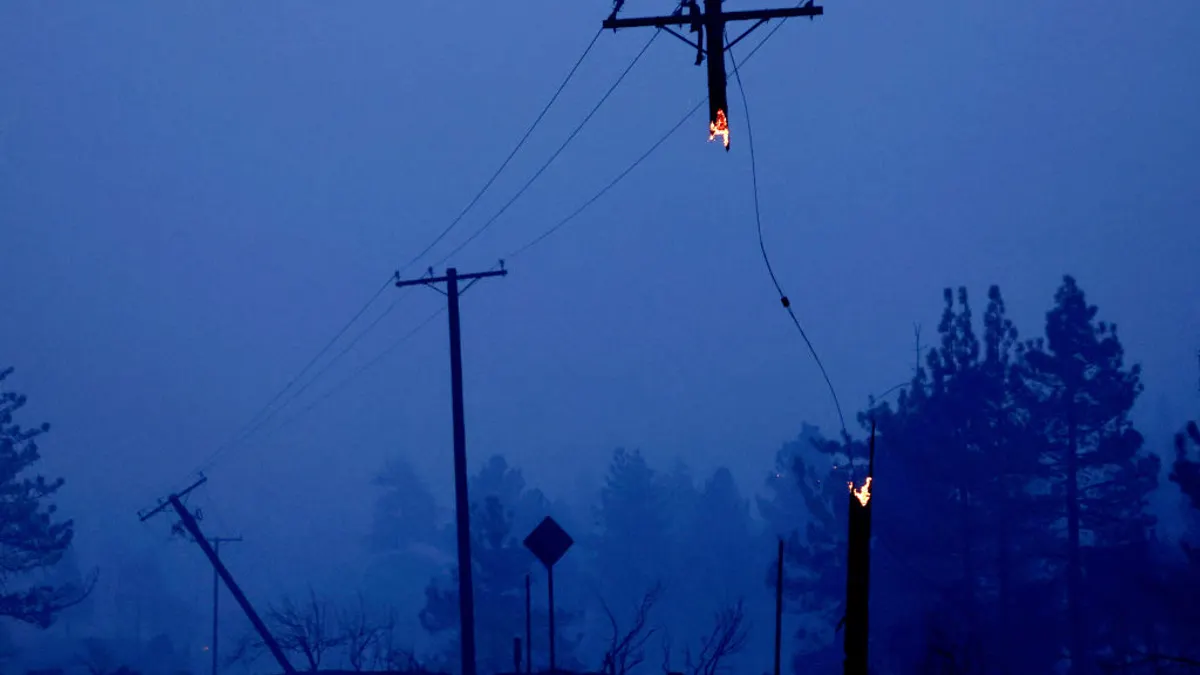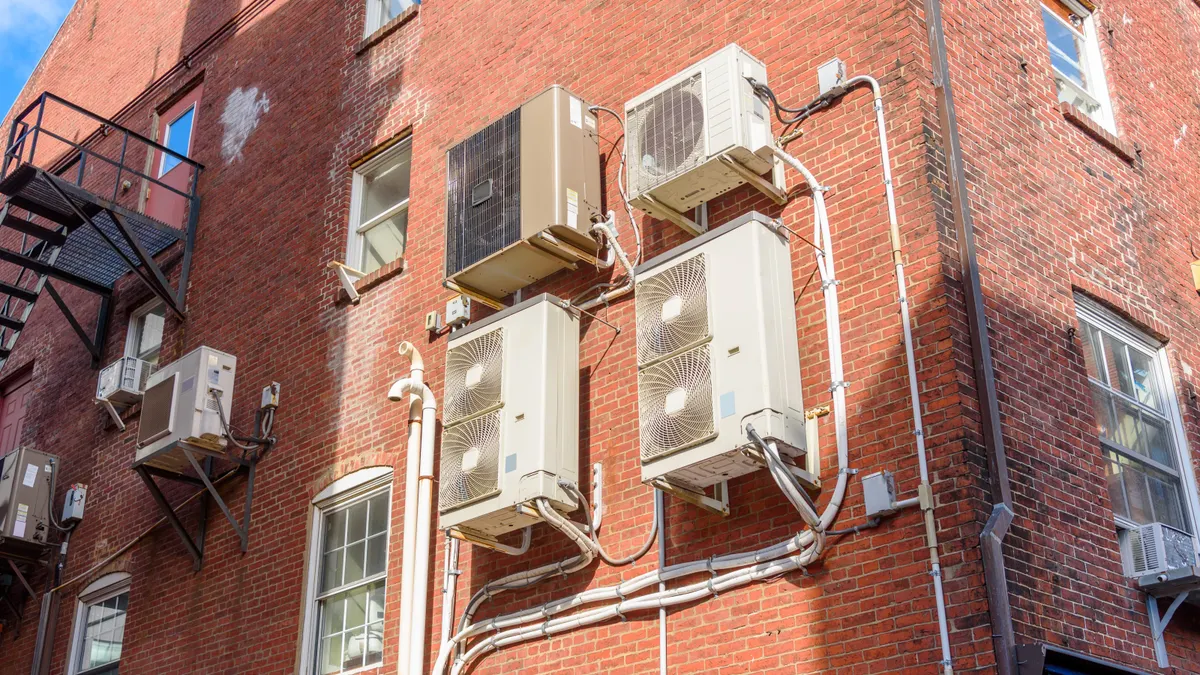Since the beginning of the Covid-19 pandemic, U.S. electric utilities have disconnected more than 3.5 million households while utility executive compensation has "skyrocketed," according to the latest iteration of a report from the Center for Biological Diversity and BailoutWatch.
Using the analysis published on Monday, the groups will advocate for greater transparency of utility power shutoffs, to better understand how the rate of disconnections is impacting Americans.
Only 33 states and Washington D.C. require shutoff disclosures from utilities, per the report.
However, the investor-owned utility trade association, Edison Electric Institute, refutes some claims in the report, saying outstanding debts from customers are much higher than presented.
"Outside groups that advocated for a one-size-fits-all approach continue to push out dubious claims about our industry’s efforts to support our customers," Brian Reil, EEI spokesperson, said in an email.
The Center for Biologicial Diversity and BailoutWatch published the first iteration of "Powerless in the Pandemic" in March 2021, citing the greatest impacts on Southeastern states, including Georgia, Florida and the Carolinas. The new version includes disconnection data for the full year of 2021, while adding a new layer of comparing shareholder and executive compensation changes since the start of the pandemic.
The report says 12 utilities have been responsible for 87% of all documented disconnections during the pandemic: NextEra Energy, Duke Energy, Southern Company, Exelon, American Electric Power, Ameren, AES Corporation, FirstEnergy, Emera, PPL Corporation, DTE Energy and CMS Energy. According to the report, shareholder dividends for those 12 utilities increased by 13%, or $1.9 billion, in 2020 and 2021. Eight of those utilities have also seen executive compensation increase by an average of 24% during the pandemic.
The report posits that the $1.9 billion increase in shareholder payouts could have been used to forgive customer debt for those 12 utilities five times over. The report assumes monthly U.S. electric bills are $106 for the unpaid bills, thus having the 3,170,730 household shutoffs that occurred during the pandemic amount to nearly $336.1 million.
According to EEI, the debts of a typical household at risk of being disconnected "unfortunately were much higher than $106" when energy is shut off. The report does quote National Energy Assistance Directors’ Association estimates that total utility arrearages increased from $20.2 billion in 2020 to about $22.3 billion in 2021.
"[T]he reports make simplifying assumptions that may lead readers to believe that all disconnected households owed $106 and that they all were disconnected immediately after missing a single payment," Reil said.
“The initial report was inaccurate and flawed, and 2.0 is another disingenuous attempt to chase headlines, while ignoring the fact that electric companies have been and are providing significant support to their customers throughout the pandemic," he said.
The report authors say the lower estimate for ratepayer debt is based on a lack of transparency, and are seeking state and federal enforcement for more data disclosure.
"We actually don’t have a full portrait of how egregious this is, first and foremost," because data on arrearages isn't robust enough or even available in certain states, said Jean Su, report co-author and energy justice director at the Center for Biological Diversity.
"There hasn’t been a deep dive [federal] investigation on utilities and how they're spending their money for decades now. It’s hopefully the start of a much greater investigation," said Su, who is also a senior attorney at the Center.
Other energy assistance experts have similarly said that the burden of unpaid energy bills is greater than reported, exceeding federal and state aid programs.
"There was more money provided for energy assistance but it wasn’t a national moratorium" on shutoffs during the pandemic, Mark Wolfe, executive director of the National Energy Assistance Directors’ Association, said. "The problem is that the 'problem' was greater than the amount of money provided."
In March 2020, EEI members voluntarily suspended disconnections, "and they worked closely with their state regulators to develop new solutions to support individual customers," Reil said.
Shutoff moratoria existed for various lengths during the pandemic, and some utilities created extensions after complaints from customers.
Increasing energy program assistance and oversight
EEI took issue with the premise of the report that shutoffs would be initiated after one month of non-payment. That would be unrealistic based on the procedure of shutting off service, according to Reil.
"The utility industry standard is to initiate shutoff procedures after one month of non-payment," the report said in its methodology.
EEI's members have expanded payment options and continue educating customers about government-funded programs such as the Low Income Home Energy Assistance Program, which is over 40 years old. Utility customers are also contacted many times regarding unpaid electric bills, including with application information for energy assistance funds, according to Reil.
"Importantly, if customers get on a payment plan, even one that spreads payments over months and years, they will not be disconnected. Powerless in the Pandemic 2.0 once again deliberately omits this information," he said.
The fact that utility debt can be accrued over many months with added interest or late fees, is an important issue to the report authors, who highlighted several tools that need to become more available to ratepayers. To help with energy burdens, legislators and energy regulators could work on more "loans for customers to help them pay for utility bills, and payback policies at utilities to remain connected and pay back their bills without accumulating interest," Chris Kuveke, co-author and data analyst at BailoutWatch, said.
Efforts to increase the transparency of customer arrearrages and power shutoffs continue, with the report showing that regulators in 17 states and Puerto Rico "have failed to even request that utilities report the number of households they disconnect every year." In 2019, the National Association of Regulatory Utility Commissioners adopted a resolution urging state regulators to collect disconnection data on a monthly basis, but authors of the report say the resolution is not being implemented.
In March, the U.S. House Energy and Commerce Committee pushed six of the largest domestic utilities to detail more information on arrearages and energy assistance programs throughout the pandemic. House Energy and Commerce staff did not respond to inquiries on the status of those requests.
"We have a lot of data on utility operations, but we don’t have a lot of data on utility debt at this level. There’s also accounting issues — how you count for bad debt is not standardized," Wolfe said.
According to the Center for Biological Diversity, Democratic members of Congress are currently negotiating the addition of language that would create a standard for power shutoff disclosures within the FY 2023 appropriations bill package.
"I would hope that it is a bipartisan effort at the end of the day, this is a crisis that affects all states," Su said.























